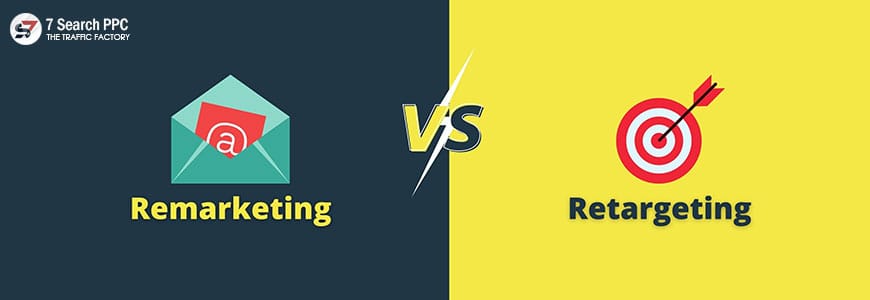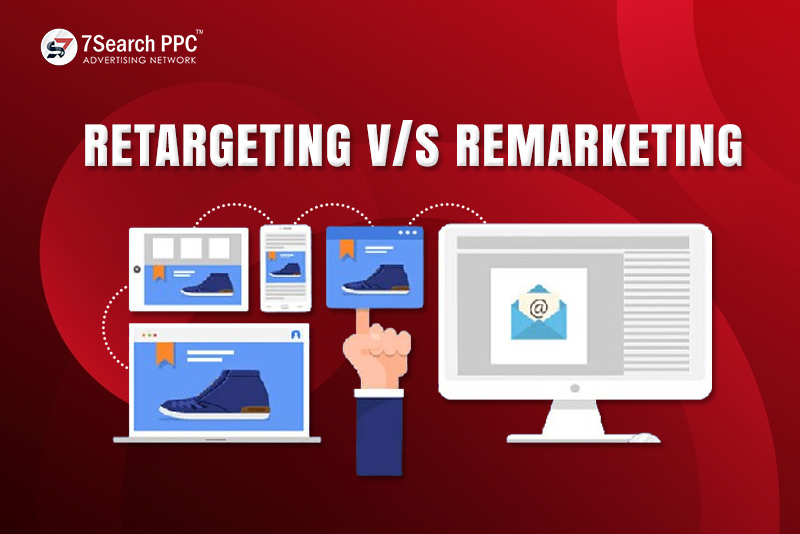Often, people use the terms “remarketing” and “retargeting” interchangeably, but there are some significant differences that you should know.
The confusion arises because many, including marketing professionals, often use remarketing and retargeting interchangeably. However, technically, both aren’t the same. While the goal of retargeting and remarketing is the same, the strategy used and who you will reach differs significantly.
Difference Between Retargeting And Remarketing
Advertising experts spend a ton of time obsessing over numbers, getting creative, and testing audiences. It can be a tedious process, with only a fraction of ad clickers converting.
Though you can get a lot of web traffic, it might not quickly translate to increased sales numbers. Only a few people make a purchase the first time they visit your website.
When you have overwhelming data and can track virtually everything, you can become distracted. It is easy to neglect the role of marketing in front of the might of seemingly unlimited data.
Marketing efforts are essential to winning people over long before they make any decision. An excellent marketing strategy can convince people to choose your company or product over others while making a purchase.
It is not always beneficial to target new people. Often you can gain more by targeting people who have already visited your website or have interacted with you in the past.
The strategies used in remarketing and retargeting can allow you to reach these potential customers, who are more likely to purchase from you than first-time visitors.
Let’s individually analyze remarketing and retargeting to make the difference clear.

What Is Retargeting?
In simple terms, retargeting is the process by which we can show ads to an individual based on their prior interaction with our website.
It can have multiple approaches and most often refers to displaying ads targeting the users who have visited your website but have not made a purchase.
Once someone opens your website and takes any action, a cookie gets set in their browser. This cookie contains information regarding the action the visitor took and whether they had purchased something. You can retarget potential customers with relevant ads using this information.
Usually, third parties place these ads on different websites. With the cookies you put in the visitor’s browser, you can make sure that they will see the ads you want them to see on various websites they open.
We can categorize retargeting into two events – on-site and off-site.
You can choose between the two depending on what type of interactions you want to target. Each method has different strategies that you can employ to retarget your potential customers.
On-Site Interactions Targeting
It is the most common approach when it comes to retargeting. This method involves targeting people who have already visited your website, and interact with your products and services before but have not completed the sale.
Retargeting the individuals who have shown interest in your product or service can increase conversions.
You can take into consideration the following parameters for on-site targeting:
- Targeting depends on the product the person has interacted with but doesn’t buy.
- Try targeting depending on how they have found your website. These modes can include – social media, web search, or other inbound events.
- Target those in your email list who have shown interest in your brand but have not yet purchased anything.
You can set these targeting parameters within different ad platforms, including:
- Google ads
- Facebook ads
- Google Analytics
- and others
Retargeting campaigns typically show higher engagement and conversion rates than usual campaigns because it is easier to persuade people to buy things if they have already shown interest in your product or brand.
Off-Site Interactions Targeting
Previously, the scope of retargeting was not broader than what a person does on the website. However, that changed with the advent and popularity of social media.
It means that now, the product and brand information does not stay in only one place. Instead, it is available across different areas. Audience interactions now exist in various places not owned by the brands.
Social media behemoths like Facebook recognized the potential and started making engagement targeting possible.
In other words, off-site interaction targeting means that the brands could focus their retargeting efforts on the people who have interacted with their content on social media.
What Is Remarketing?
In remarketing, a business tends to reach out to its existing customers with information about new products and services or remind them to renew their subscriptions. In the retargeting campaign, they approach potential customers who have interacted with the website but have not made the purchase.
Techniques and tools used in both are mostly similar, hence so much confusion.
The preferred way of remarketing is email. Often companies go the route of paid advertising for remarketing by showing ads related to an accessory to the product a customer has already bought.
The Fuzzy Boundary Between Retargeting And Remarketing
Earlier, the boundary between email marketing, retargeting, and remarketing was clear because each has a different implementation and way to implement it. However, in recent years with platforms like Google Ads and Facebook, remarketing and retargeting have become centralized.
You can now use the same tools for remarketing that you are using for retargeting, which makes one feel that both are the same things.
With Facebook and Google Ads, the concept of an email list is losing its relevance. You can target the same people on these social media platforms (by running a paid advertisement campaign) you can via an email list.
The ability to simultaneously do the retargeting and remarketing makes the boundary between them even fuzzier.
Conclusion
The overlap and differences between remarketing and retargeting have become less clear over the years. But we can say the same for digital marketing in general.
The ultimate goal of digital marketing, remarketing, retargeting, etc., is to increase conversions. The only difference is the strategy you are using for increasing conversions.
Retargeting is heavily focused on paid ads. Remarketing email campaigns are more personalized and target those individuals who have already bought something from the company.
The trend of merging two different things into one is a thing you can see in digital marketing as a whole. As digital marketing platforms become more capable, it will only become about which blend of tactics can give you the best results.
Frequently Asked Questions (FAQs)
What is the difference between marketing and retargeting?
Ans. Marketing encompasses a broad range of activities aimed at promoting products or services while retargeting specifically focuses on re-engaging users who have previously interacted with a brand online, serving them targeted ads to encourage conversions and enhance brand recall. Retargeting is a subset of marketing, that emphasizes personalized strategies for reconnecting with specific audiences.
What is remarketing also known as?
Ans. Remarketing is also known as retargeting, referring to the practice of displaying targeted ads to users who have previously visited a website or engaged with a brand online, aiming to rekindle their interest and encourage conversions.
What is an example of remarketing?
Ans. An example of remarketing is when you visit an online store, view a product, and then see ads for that specific product or similar items on other websites or social media platforms. This targeted advertising strategy aims to re-engage potential customers and encourage them to return and make a purchase.
What two types of remarketing can be used?
Ans. The two types of remarketing commonly used are standard remarketing, which targets users who visited a website, and dynamic remarketing, which displays personalized ads featuring products or services that users viewed on the site. Both strategies aim to re-engage visitors and enhance conversion rates through tailored advertising.
What is search retargeting vs remarketing?
Ans. Search retargeting involves targeting users based on their search behavior, showing ads to those who have entered specific search queries, even if they haven’t visited a particular website.
On the other hand, remarketing focuses on displaying ads to users who have previously interacted with a specific website or brand, regardless of their search queries. While search retargeting is based on search engine behavior, remarketing relies on users’ prior interactions with a particular site or content.


















